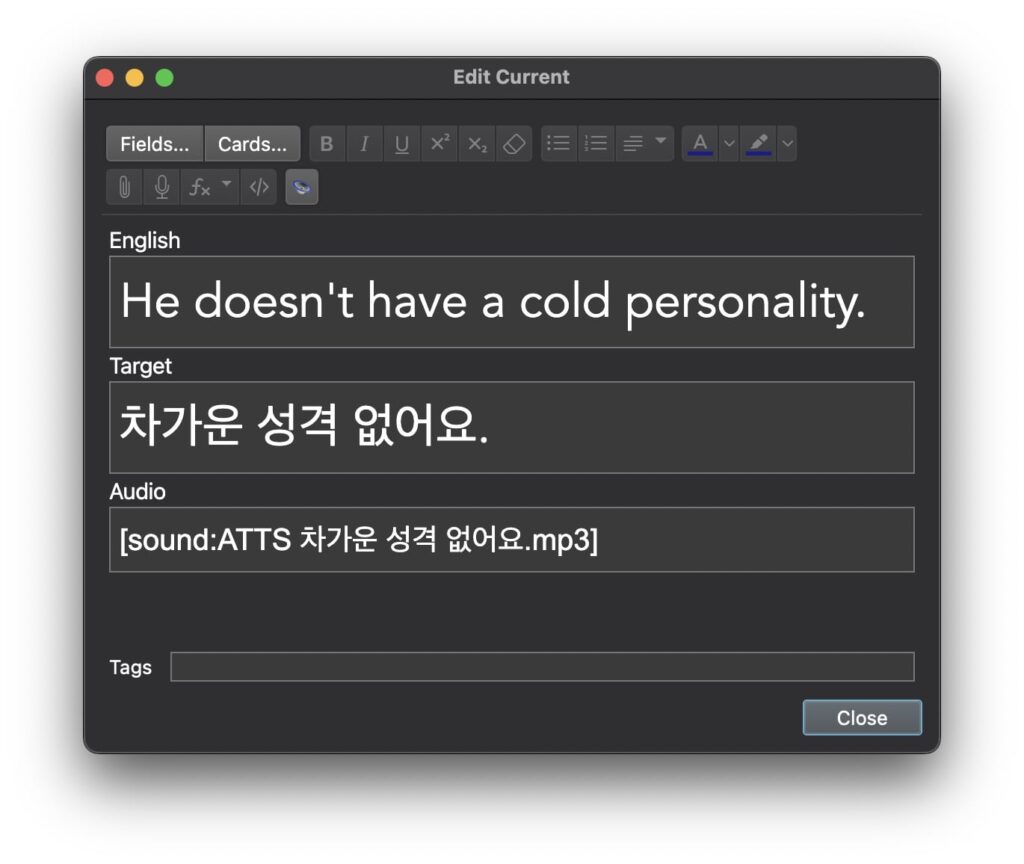Anki Notes vs Cards — Explained (For Language Learners)
When starting with Anki, one of the first thing people notice is that it’s quite complicated.
The interface looks like it was designed by computer programmers for other computer programmers. What do all these things do??
Here are our other articles on using Anki for language learning:
- How to use Anki for Language Learning — A Beginner’s Guide
- An Anki Pro Language Learner’s FAQ — Many concepts explained
- Anki Notes vs Cards — Explained for Language Learners
- Some Creative Ideas for using Anki for Language Learning (WIP)
Anyway, one of the first things I struggled with was notes vs cards. To the first-time user, they sound like the same thing.

Contents
Notes vs Cards — In a Nutshell
In a nutshell, one note has the information for many cards.
For example, your note may have three fields:
- Base language
- Target language
- Audio
This is actually a note structure I use a lot.

You can then make cards based on these, like
- Speaking: Base language –> Target + Audio
- Listening: Reading –> Base language
- Listening: Audio –> Base language
And so on.
How to think about Cards vs Notes
The easiest way to think about cards vs notes is to think a note is every single new word or phrase you want to learn.
The cards are all the ways in which you want to learn that word or phrase.
You don’t have to learn every word or phrase in the same way. Some phrases are only worth learning how to understand, because you never have to say them.
For example, the standard greeting you hear in many Asian restaurants (“어서 오세요!” in Korea, “いらっしゃいませ!” in Japan, etc.) is a phrase you have to understand in audio, but probably never read nor say.
But think about cards in the sense of literally the number of reviews you have to do every day.
Every review is a mini test. They take a mental workload. After maybe 1-200 reviews, I’m really tired — that’s about the maximum I can do in a day when I’m doing semi-intensive study.
So don’t overload on card types per note, as it will reduce the number of notes you can learn.
How many cards should you have per note?
The number of cards you should have per note depends on the number of fields in the note.
At a minimum, use one card per note. This is the standard “Basic” note setup.
The one-card-per-note setup simply takes the note and uses the first field as a question and the second is the answer.
The slightly more advanced (and very common) set up is the two cards per note setup.
Usually this looks like
- Front –> Back
- Back –> Front
This means you get an even amount of testing on both speaking and reading/listening (listening only if you have done audio).
An important caveat is the more cards you add per note, the more your workload grows. If you have three cards per note, then every time you add a new word or sentence to your deck, you’ll have three cards to learn and then review.
Since I think a reasonable number of new cards per day is something like 20-30, this reduces the number of new cards you can add to your deck every day.
Some Creative Uses of Notes and Cards
For language learning, I use notes and cards in some creative ways. I’ll go over this in another article later, but you might want to experiment with it first.
Some things I like to do are
- Put in “transliteration” for languages where I’m still learning the script. I can include it in the card, and later when I have mastered the script, I can remove it from the card.
- Create custom decks that only test on one card, e.g. using “card=2” in the custom deck filter. This way I can test just reading, or listening, etc.
- Add more, identical cards, to emphasise testing listening. For example I might have 1 speaking card for every 3 listening cards.
There’s a lot more you can do. Once you’ve separated the idea of a card vs notes in your head, you can get very creative with how you learn languages with Anki.






